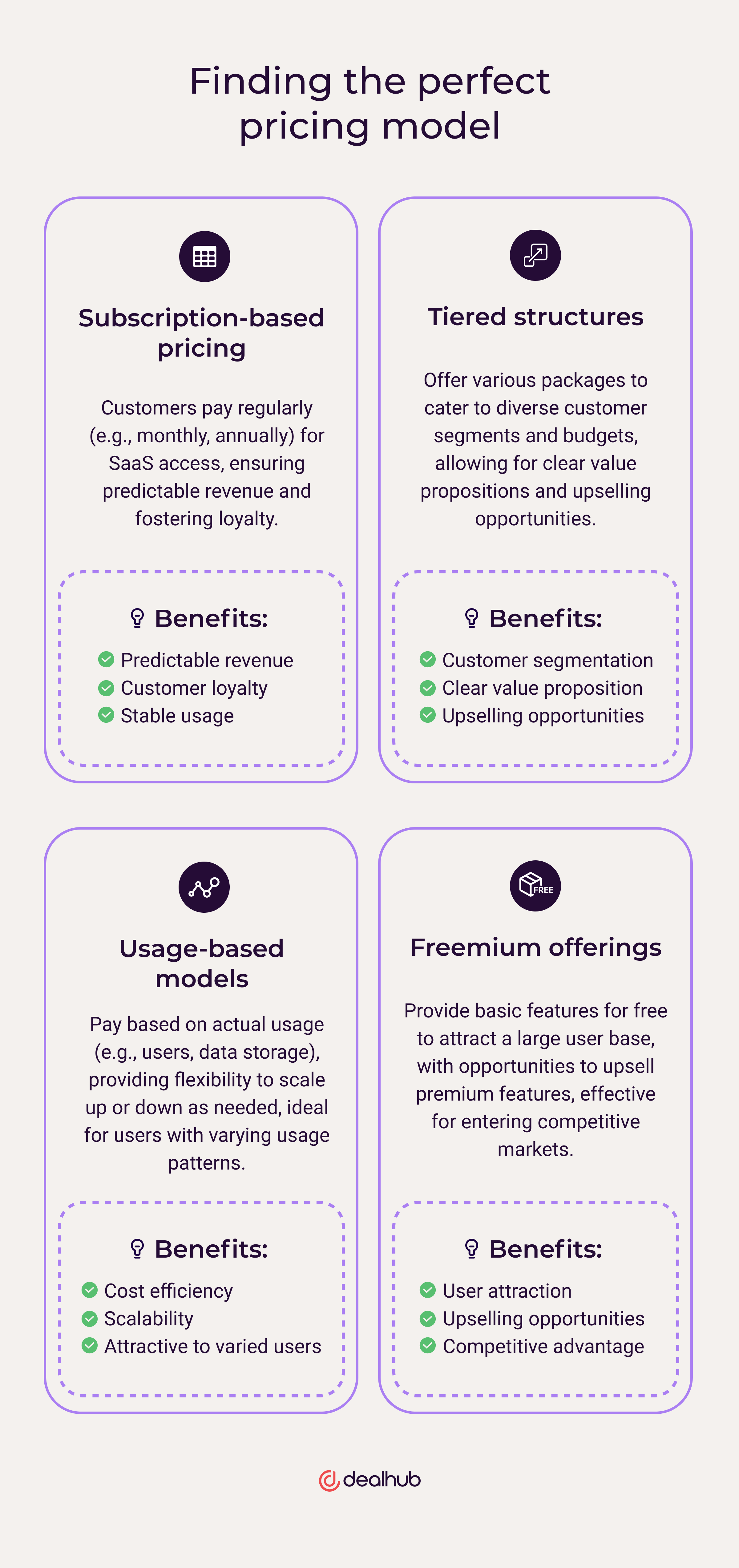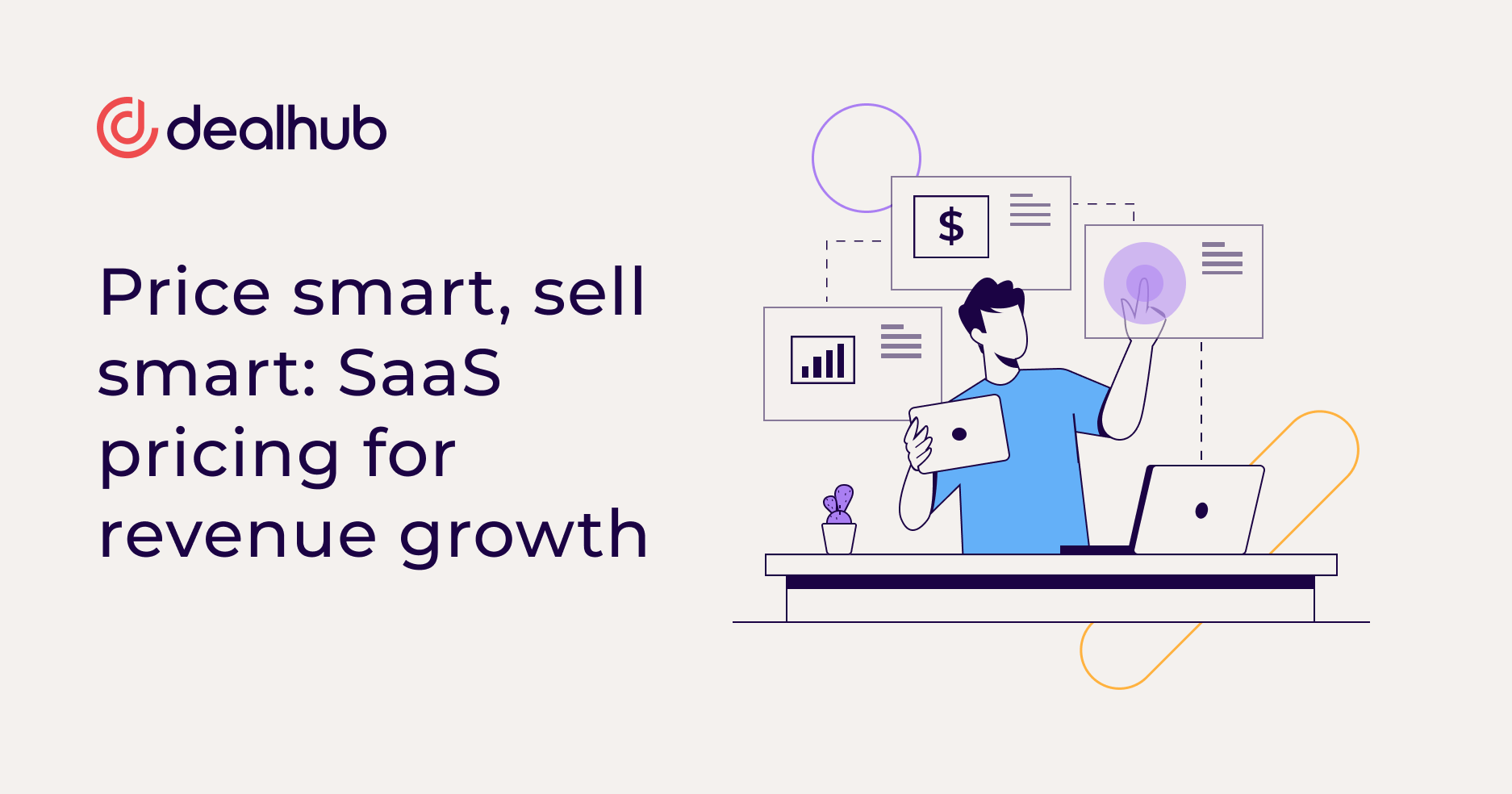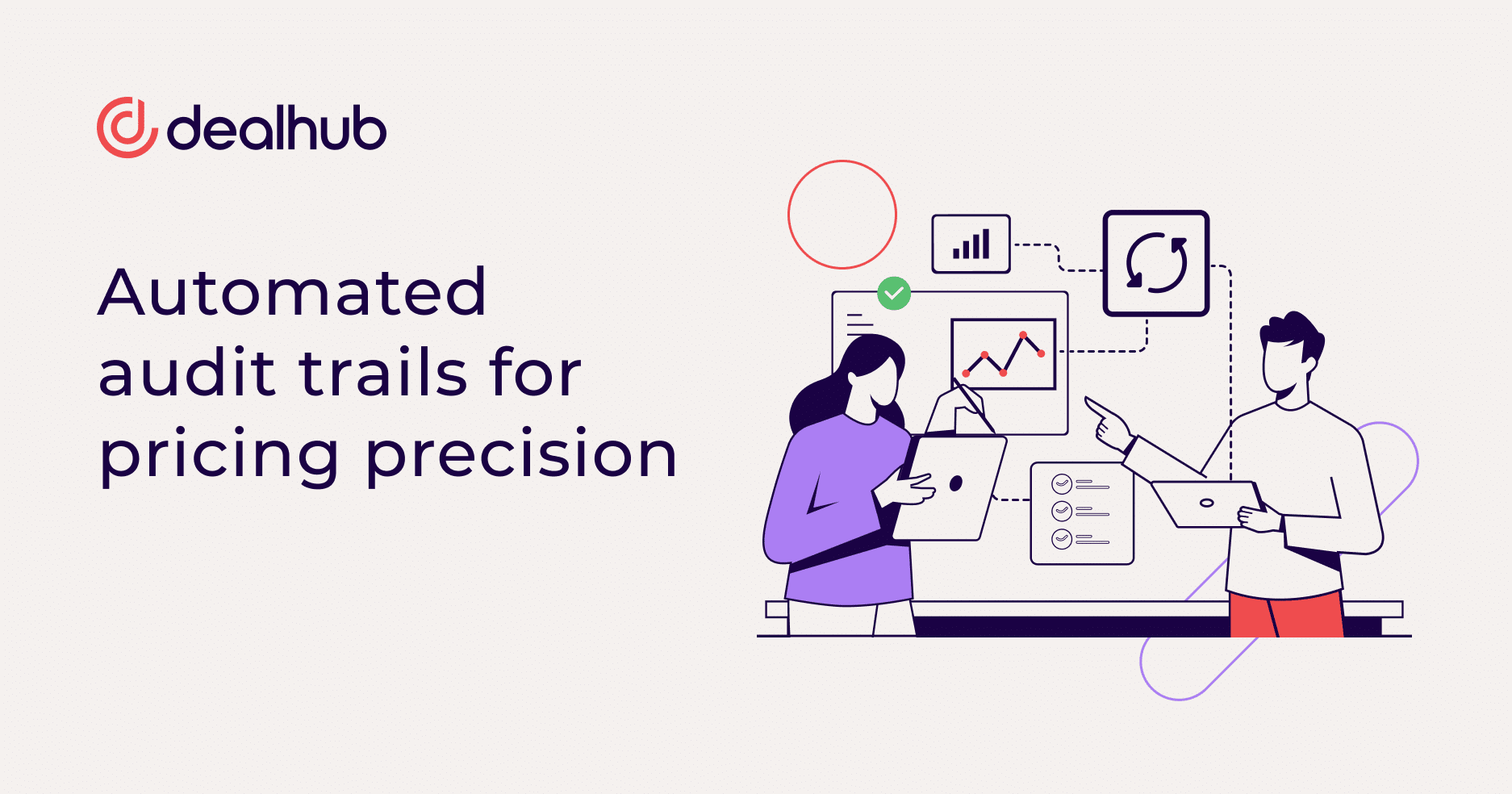Today, we dive into the intricacies of SaaS pricing and unravel its complexities so that you can look at your pricing strategy with fresh eyes. Discover practical ways to align pricing with customer expectations and explore diverse pricing models. By having a better understanding of the modern pricing landscape, you’ll be positioning yourself to handle scalability challenges while prepping your team for smart selling opportunities.
SaaS pricing is complex
The SaaS landscape has grown in complexity over time. This more flexible environment has created unique opportunities for more diverse pricing options that can meet the shifting needs of an ever-more-savvy customer base.
And, while subscription-based models, usage-based pricing, and freemium structures (or a combination of the three) can offer flexibility, they can be challanging to price. Ensuring scalability and navigating market trends (for example, supply and demand or fierce competition) can further complicate matters.
It’s important to recognize that customers also have different needs than they had just a few years ago. While some prefer to pay based on usage, others may want to pick and choose from a menu of features. It’s your job to understand what your clients need so that your pricing structure meets their expectations.
Aligning pricing and customer expectations
For SaaS companies, customer expectations are as diverse as the solutions offered. However, the secret lies in aligning pricing with perceived customer value. Conducting thorough customer research is the key to longevity and ongoing success. After all, loyal customers are the backbone of sustained revenue growth! Understanding and exceeding their expectations is critical. It’s not just about today’s sale – it’s about building relationships that stands the test of time.
To find that sweet spot, where optimal pricing meets client expectations, try:
Conducting comprehensive customer research. In-depth research will reveal customer pain points and budget constraints to help you nail down a fair price point.
Segmenting your customer base. Since different clients have different needs, it’s best to segment customers based on usage patterns, industry, or company size so that you can adjust pricing appropriately.
Adding value in different areas. You can enhance the perceived value of your product or service by offering additional services, support, or features that can enhance the customer experience and set you apart from the competition.
Factoring in loyalty. You want your client relationships to stand the test of time, so factor loyalty into the pricing equation. Whether it’s a discount offered during renewals or other perks for power users, consider ways you can use pricing to strengthen long-term brand commitment.
Finding the perfect pricing model
SaaS applications come in different shapes and sizes, and so should their pricing models. Your pricing model is crucial to the success of your SaaS pricing playbook. Selecting an optimal model requires you to have a sound understanding of your target audience while taking into consideration your product’s complexity and keeping an eye on the competition.
Consider these pricing options:

- Subscription-based pricing. In this model, customers pay a recurring fee at regular intervals (monthly, annually) for access to the SaaS product or service. Companies use it when they need to prioritize predictable revenue. It also encourages customer loyalty as users commit to ongoing payments. Subscription-based pricing models are well-suited for SaaS products with stable and consistent usage patterns.
- Tiered structures. Tiered pricing allows companies to offer different packages (or tiers) with varying features and pricing to cater to different customer segments. Companies use tied structures when they need to address the needs of varied customer segments and different budget constraints. This model provides a clear value proposition for customers at different usage levels and creates opportunities for upselling as companies grow and require more features.
- Usage-based models. This option allows for pricing based on the actual usage or consumption of the service, typically measured by specific metrics (e.g., the number of users, data storage, API calls). That way, customers only pay for what they use while having the flexibility to scale up or down to match fluctuating needs. A usage-based pricing model is popular among users who have varying usage patterns.
- Freemium offerings. This pricing option offers basic features for free, with premium features at an additional cost. Companies may leverage the freemium model to attract a large user base with a free offering in order to expand their customer pool quickly. It also provides excellent opportunities to upsell premium features to users who find value in the free version. This is an effective pricing approach for companies entering competitive markets and working towards gaining a toehold in their desired industry.
Choosing the right pricing model often depends on various factors, including:
- The nature of the product
- Target audience
- Competitive landscape
- The company’s growth strategy
A hybrid approach, combining elements of different models, is common in the SaaS industry. Hybrid models allow companies to cater to a diverse user base and optimize revenue streams. Each pricing model has its advantages and challenges, and the choice of pricing model should align with the company’s overall business goals and customer expectations.
Tackling scalability issues in SaaS pricing
Once you’ve decided on a pricing approach, you’ll need to factor in how you’ll be able to accommodate for scalability.
Offering the right balance of value is important when scaling. For example, you want to make sure each user group has the right tools at their disposal, but you also want to entice them to move up a tier, add more services, or increase usage over time to expand your revenue. As your customers grow and their needs change, your pricing plans should seamlessly match their pace. The key is to remain flexible for your user base, which ideally will evolve alongside your offerings.
To prioritize scaling in your pricing model, consider:
- Offering tiered structures that cater to various stages of a customer’s journey
- Remaining flexible when offering plan upgrades
- Showing the value of “leveling up” to the next tier or subscription phase
- Building enterprise-level solutions and customization options for your most significant power users
Smart pricing enables smart selling
The right pricing structure with transitions between tiers or subscriptions that allow for seamless scaling will make selling easier! When your organization has an attractive pricing structure, your sales team is empowered to sell smarter. However, to align your pricing with your sales goals, it’s essential to consider several aspects of the sales process.
Consider sales objectives
Pricing and sales objectives should work in harmony. Therefore, understanding the market, customer needs, and your product’s value proposition is vital in setting pricing strategies that align with sales goals. Remember: it’s not just about making a sale; it’s about creating a sustainable revenue stream. By understanding the broader market – and your customer’s needs and expectations (and then pricing accordingly) – you’re setting your sales team up for success.
Empower the sales team
Sales team performance is enhanced when they have the right support and technology available to them. To ensure long-term sales success, provide your team with essential components, including clear value propositions, pricing guidelines, and the right tools.
Technological solutions like:
- Accurate quoting tools (such as CPQ and billing software and tools)
- eSign tools
- CRMs (for customer management)
- and more
will help sales representatives navigate complex pricing models, manage customer relationships, and close deals faster. A well-equipped sales team translates into confident, effective selling—all crucial to achieving revenue growth.
Leverage strategic pricing models
Not all clients are built the same. Strategic pricing models, such as tiered pricing and usage-based structures, will cater to the diverse needs of your customer base. Tailoring your approach to different segments ensures your pricing resonates with each unique customer requirement.
Implement discounts strategically
Discounts and promotions can be powerful tools when used strategically. SalesOps must carefully implement discounts to drive sales without eroding the value of your product. When mastered, it’s a delicate process that contributes to revenue growth without compromising profitability.
Train sales teams for customer conversations
Sales conversations should be about articulating value, especially in pricing discussions. Training your sales teams to navigate these conversations effectively ensures that customers see the worth of your product, thereby justifying the price and fostering long-term relationships. Sales enablement is a powerful alley in modern sales. To foster impressive results, arm your team with social selling techniques and prioritize relationship building.
Strategies for SaaS pricing success
Success in SaaS requires constant adaptation. Regularly assessing and adjusting pricing strategies keeps your business agile in response to market changes. Be proactive and prepare for shifting market realities by leveraging data and analytics. Studying KPIs and making informed decisions will guide you through an ever-evolving SaaS landscape.
Pricing for revenue growth
The right pricing model can help you stand out in a crowded SaaS landscape. After all, pricing is not merely a transactional detail – it’s a strategic cornerstone that can propel revenue growth. By aligning pricing with customer expectations, factoring in scalability, and empowering your sales teams, you’re not just selling smarter—you’re laying the foundation for sustained success.
The SaaS landscape will continue to evolve. Those who master the art and science of pricing will find themselves keeping pace and leading the market in revenue growth and industry expansion. Therefore, continue to revisit your pricing strategy regularly! By prioritizing pricing and keeping it top of mind, you’ll break away from the competition while meeting your customer’s ever-changing expectations.




